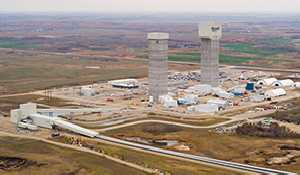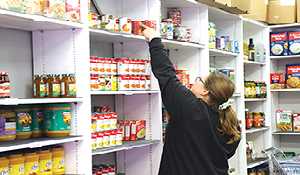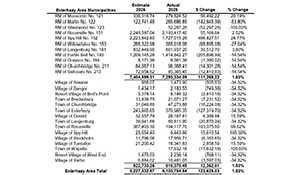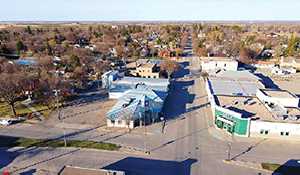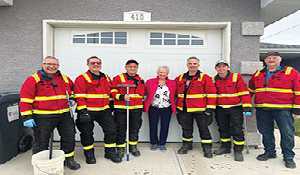Local fresh flowers at Half Diamond Flower Farm
September 3, 2024, 4:10 pm
Ashley Bochek


Lynette Bock, owner of Half Diamond Flower Farm, plants flowers each year to cut and sell to florists and businesses in the area.
Bock also owns a law firm in Rocanville and keeps herself busy with the two different businesses.
“I've always loved growing stuff," Bock said. "I'm a lawyer too, but I want to move onto something different at some point and it's not going to happen overnight. I have to build this up first and I'm to the point in the law business where I've got an articling student starting with me, so hopefully in a few years she can take over or I can work less.
"I wanted to try something different so this is my fourth year growing. I'm from a farming background and it's always been something that both of my grandmas did. They always grew lots of flowers so it's something that I was interested in," Bock explained.
She says she began thinking about a flower farm during winter.
“It was wintertime and it was miserable out and I started following some of the bigger growers on Instagram. That’s where I learned a lot about different ways of growing things and what flowers are good because not all flowers are good as cut flowers. You can’t grow some things here that people can grow in warmer places.”
Bock says planting a flower farm is the polar opposite from running a law office.
“This is totally different for me. It is a different kind of stress. Doing this, you're not dealing with people. You sell your flowers to people, but it's not the same, and you're not dealing with the same problems. You can come out here and it's calm and quiet and it gets you outside. You're in nature and it's just a totally different type of job—it's about as opposite as you can get."
Bock says she has media platforms to contact her for flowers.
“I have both an Instagram and a Facebook page and anyone can message me directly on there.
“I try to stay away from getting people out touring around because we have lots of animals around. I've never tried the you-pick thing—I'd have to almost set up a totally separate field for that because I've gotten to where I sell a lot of my flowers to florists now, and they have to be in a certain condition to sell to a florist. It's not something I'm opposed to doing someday but not right now."
How it started
Bock says she started selling flowers to Cornucopia Gardens south of Rocanville.
“I started selling initially to Heather Graham at Cornucopia Gardens. She is awesome. I just take bouquets there and they sell them.
"I do offer subscriptions as well, where people can buy a certain number of bouquets for the summer and I just deliver them. It's either bi-weekly or monthly."
Bock says she has some of her flowers at Third Avenue on Main in Moosomin as well.
"This year, Tia from Third Avenue approached me and I've been taking flowers there regularly since they've been ready, and that's been really good. She's awesome to work with too, and they like to promote that they have local flowers in the shop so it's a good outlet for me as well. Maybe one day I'll expand to doing it more regularly with other florists but she was the one who approached me first this year and that's worked out well.”
Flower farm challenges
Bock explains growing flowers in Southeast Saskatchewan is challenging.
"It's tough because in our growing zone, the crop year is very short. That's where it's tough to build this up. I have planted a whole bunch of peonies so that gives me more spring flowers and this year I sold a bunch of tulips too. The tulips bloom early in the spring usually around May and June, and then there's usually a bit of a lull until late July when other flowers grow. I have planted a few perennials that might bridge that gap a little bit."
Bock says there are many variables that affect the flowers' growth. “I plant some that are self-seeding. Some years the flowers that did great last year, do terrible this year. It depends on the weather, the temperature, and bugs. We've always got lots of bug pressure and last week you could tell that people started swathing canola because the flea beetles showed up for a few days."
She says she would like to expand her garden to help extend her flower season. “I'd like to someday put up a hoop house (a type of greenhouse) or something like that. When you do that it extends your season because things are ready a little bit earlier depending on the weather. It might extend it a little bit later, too. It's all trial and error.”
She says she enjoys delivering flowers to people. “The fun part is seeing people’s reaction to the flowers. Sometimes people have me deliver flowers to someone and they’re not expecting them, and it’s always kind of neat to see how they react to it and people just seem to really appreciate them."
Stages of growing
Bock starts preparing for the season early in the year.
“You start planting some seeds in January. Most of them aren't that early, but there are a few that are. They get planted in seed trays and I set them in my sun room. I have thousands of seedlings in there by the time spring comes around. Most seeds don't start until March."
Bock says tulips are planted months in advance.
"To have tulips you plant them in the fall before. Tulips have to be in the ground for at least 16 weeks to develop a flower. So you're ordering next year's crop before this year's has even come out of the ground. So those get planted in the fall but other than that, everything else is in the spring."
The flower farm is prepped in May.
“I usually start prepping the ground in early May," Bock said. "I use the landscaping fabric just to keep the weeds down. There are some rows where I don't use it, for the flowers that kind of like the cooler weather because it gets too hot in the summer and it just fries them. I start transplanting as early in May as I can. The Zinnias I would have planted the May long weekend. I try to be done planting everything by the end of May and sometimes it goes into June.
"The tulips you harvest in May and for me this year they started right around Mother’s Day and they went until early- to mid-June. The other flowers I didn’t have anything ready until late July but this year everything was late. Usually it’s in mid-July that I’ve got flowers blooming.”
Bock says there were suggestions for planting gladiolus flowers.
“Last year was the first year that I ever grew glads and it was because people wanted them. They’re not something that I would have ever considered growing myself but I more than doubled what I had this year for glads. You have to try it yourself and it’s a bit of an experiment every year."
Word of mouth
Bock says the flower farm is beginning to be more known in the area.
"I think more and more people do know, but there are probably still a lot who have no idea. It’s not something I keep a secret but I also don’t do a ton of advertising because I’m as busy as I can be at this point."
More people have heard about Half Diamond Flower Farm by having flowers in local businesses.
“Tia’s really good at promoting the flowers, so lots of people hear about me that way," Bock said. "I haven’t really done full-on flowers for a wedding yet, but I have done two weddings this year with, I call them DIY buckets. I sell flowers by the bucketful and they make their own bouquets and table decorations."
Bock says she enjoys being creative with the flower farm.
“I love I get to be creative—putting different colors and textures together and seeing what works and what doesn’t and I’ve never seen flowers make someone mad or upset."
Bock says she has flowers usually until the end of September.
“Everything will be here until we have a frost. Our usual first frost date is mid-September and I have always had flowers into October. Some things do start to slow down at that point because your daylight hours are shorter and with the cooler temperatures. Once there is a frost, everything that’s green will be brown."
Consistent hobby
Bock says the flower farm is a continuous work in progress each year.
“You have to constantly be working at it. You learn things, like sometimes it’s the depth you plant—some things work better than something else. Sometimes some plants need more shelter or things like netting to hold them up so you don’t end up with a stem that’s totally crooked.
"Probably the biggest thing I’ve learned is that every year is different and what you think you know isn’t necessarily true the next year.”



